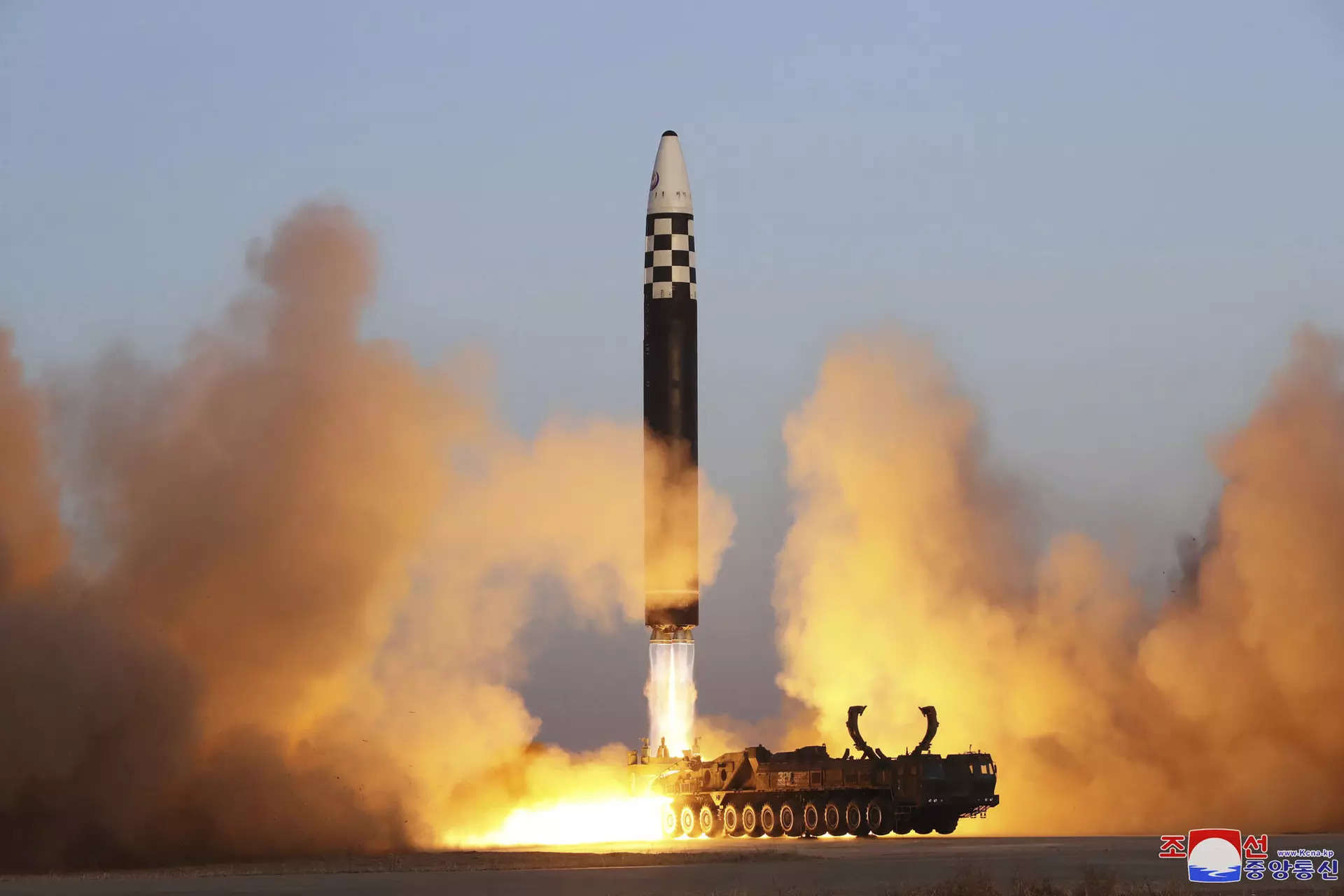Japan has raised alarms over North Korea’s recent ballistic missile test, with a government official saying that the missile launched on Monday is an intercontinental ballistic missile (ICBM) class with a potential range exceeding 15,000 km (9,300 miles), capable of reaching any part of the United States. Parliamentary vice minister of defense Shingo Miyake informed reporters about the missile’s capabilities, noting that it was airborne for approximately 73 minutes.
“The ICBM-class ballistic missilelaunched this time, if calculated based on the trajectory, depending on the weight of the warhead, could have a flying range of over 15,000 kilometres (9,320 miles).In which case the whole of the US territory would be within the range,” Miyake explained.
This launch marks North Korea’s second missile test in less than 12 hours and comes amid heightened tensions with the United States. The missile, launched from near Pyongyang, traveled approximately 1,000 kms (621 miles) towards the sea off North Korea’s east coast, according to South Korea’s Joint Chiefs of Staff. Japan’s coast guard reported that the missile landed in the sea west of Hokkaido about an hour after its launch.
NHK, Japan’s national broadcaster, reported that the missile reached a maximum altitude of over 6,000 kms (3,728 miles), with officials suggesting it was likely an ICBM. This aligns with expert analysis of previous North Korean long-range missile tests, indicating that a missile with such a high apogee is capable of reaching 15,000 kms (9,321 miles) on a normal trajectory.
The launch site near Pyongyang’s international airport has been previously used for ICBM launches and is suspected to house a missile assembly facility. This latest test follows a warning from South Korea’s deputy national security advisor about a potential ICBM launch by North Korea this month.
In response to these developments, the United States and South Korea have intensified their joint military drills. The arrival of the US nuclear-powered submarine Missouri in South Korea and the recent meeting of South Korean and US officials in Washington to discuss military strategies have further escalated tensions. North Korea has condemned these actions as provocative and a “preview of a nuclear war.”
South Korea has denounced the missile launches as violations of UN Security Council resolutions, while North Korea maintains that its actions are in self-defense. The North Korean defense ministry has criticized the United States and South Korea for their military posturing and planning, particularly highlighting the increased visits of US military assets, including the USS Carl Vinson aircraft carrier, to the region.
This escalation comes as North Korea continues to advance its missile and nuclear capabilities, having tested a range of ballistic missiles and successfully launched a military spy satellite in November. The July test of a long-range ballistic missile, believed to be a solid-fuel ICBM, demonstrated Pyongyang’s growing prowess in missile technology, posing a significant challenge to regional and global security.
(With inputs from agencies)
“The ICBM-class ballistic missilelaunched this time, if calculated based on the trajectory, depending on the weight of the warhead, could have a flying range of over 15,000 kilometres (9,320 miles).In which case the whole of the US territory would be within the range,” Miyake explained.
This launch marks North Korea’s second missile test in less than 12 hours and comes amid heightened tensions with the United States. The missile, launched from near Pyongyang, traveled approximately 1,000 kms (621 miles) towards the sea off North Korea’s east coast, according to South Korea’s Joint Chiefs of Staff. Japan’s coast guard reported that the missile landed in the sea west of Hokkaido about an hour after its launch.
NHK, Japan’s national broadcaster, reported that the missile reached a maximum altitude of over 6,000 kms (3,728 miles), with officials suggesting it was likely an ICBM. This aligns with expert analysis of previous North Korean long-range missile tests, indicating that a missile with such a high apogee is capable of reaching 15,000 kms (9,321 miles) on a normal trajectory.
The launch site near Pyongyang’s international airport has been previously used for ICBM launches and is suspected to house a missile assembly facility. This latest test follows a warning from South Korea’s deputy national security advisor about a potential ICBM launch by North Korea this month.
In response to these developments, the United States and South Korea have intensified their joint military drills. The arrival of the US nuclear-powered submarine Missouri in South Korea and the recent meeting of South Korean and US officials in Washington to discuss military strategies have further escalated tensions. North Korea has condemned these actions as provocative and a “preview of a nuclear war.”
South Korea has denounced the missile launches as violations of UN Security Council resolutions, while North Korea maintains that its actions are in self-defense. The North Korean defense ministry has criticized the United States and South Korea for their military posturing and planning, particularly highlighting the increased visits of US military assets, including the USS Carl Vinson aircraft carrier, to the region.
This escalation comes as North Korea continues to advance its missile and nuclear capabilities, having tested a range of ballistic missiles and successfully launched a military spy satellite in November. The July test of a long-range ballistic missile, believed to be a solid-fuel ICBM, demonstrated Pyongyang’s growing prowess in missile technology, posing a significant challenge to regional and global security.
(With inputs from agencies)



